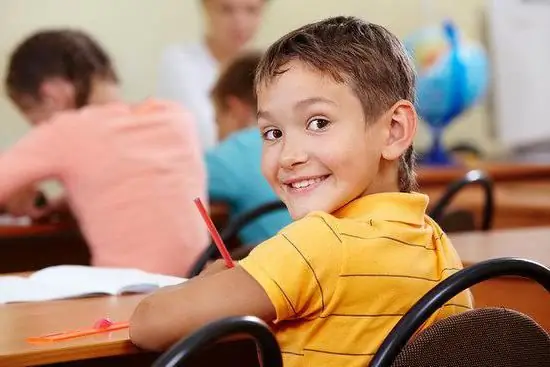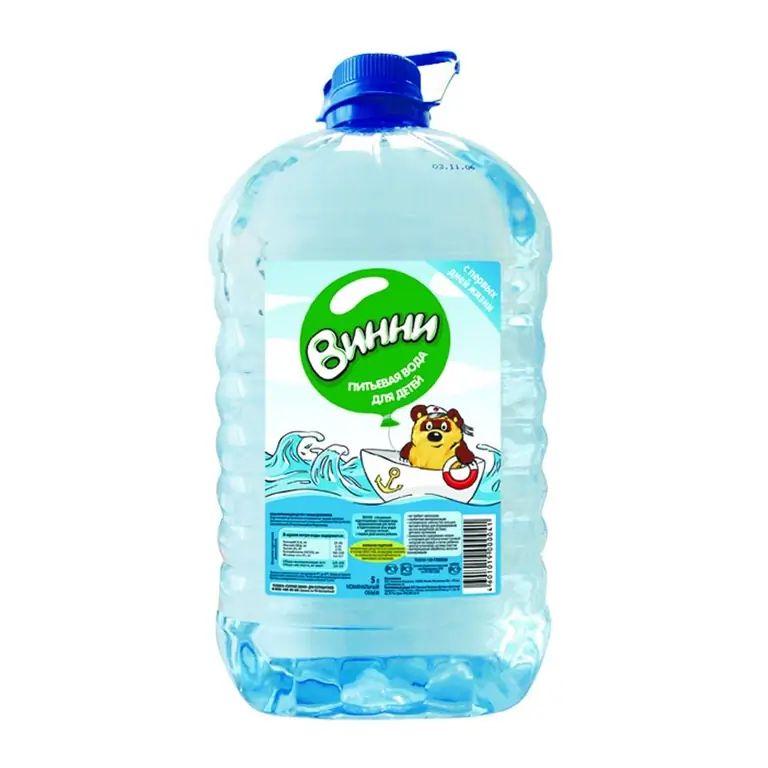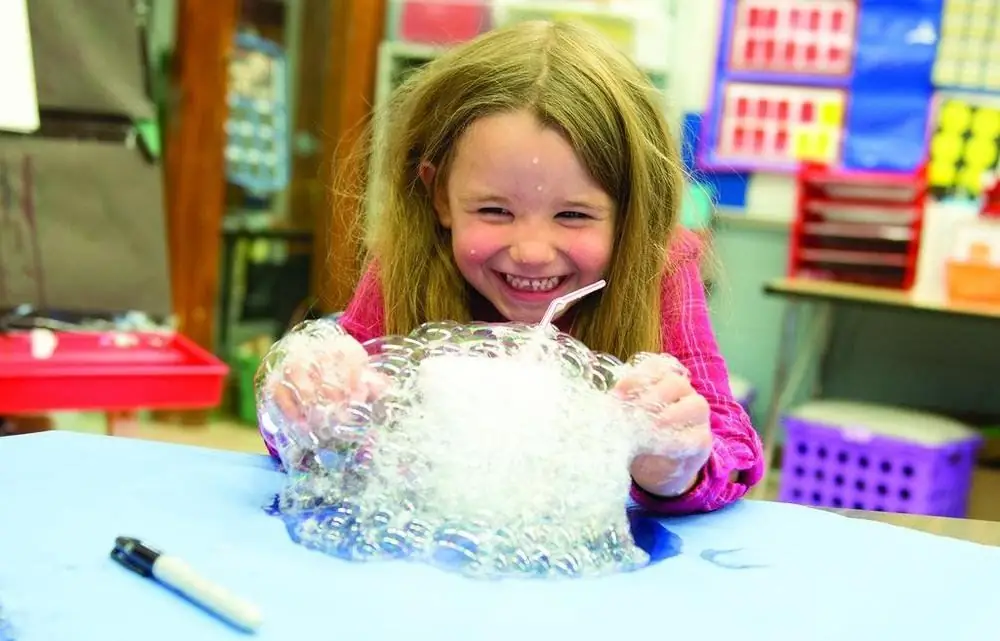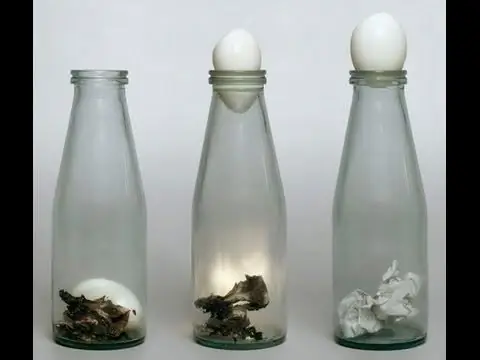2025 Author: Priscilla Miln | [email protected]. Last modified: 2025-01-22 17:55:18
All parents know how exciting kids are to play with water. They can pour it from one container to another for a long time, bathe dolls, launch boats, splash around happily. But it is much more interesting to put the first scientific experiments under the guidance of mom or dad. The properties of water is an exciting topic. The main thing is not to forget about safety rules during experiments.
Basic Features
What experiences with water can be offered to children? First, introduce them to the basic properties of this liquid. These include:
- Color. Pour water into a glass, make sure it is clear. Place a small toy in the container. It is clearly visible in the water.
- Smell. Let the baby sniff the water. Compare its smell with other drinks: fragrant tea, hot cocoa. Help to conclude - the water has no smell.
- Taste. We try boiled water, tea and cocoa. Let the child make sure that the water also has no taste, unlike other drinks.
- Shape. For this experience, containers of various shapes are needed: bottles, jars, sand molds. Children usually withenjoy watching the water take the form of any vessel into which it is poured.

Sinking - not sinking
Preschoolers enjoy experimenting with water in kindergarten. In the younger group, they are introduced to A. Barto's poem about the girl Tanya, who dropped the ball into the river. The kids are convinced that the ball does not sink in a container of water, unlike heavy pebbles. Similar games can be arranged at home by testing various objects for buoyancy.
For older children, suggest cutting flowers out of paper. Bend the petals to the middle to get closed buds. Place them in a cup of water. The liquid will gradually soak the paper, and under its own weight the homemade flowers will bloom. And after a while they will begin to slowly sink to the bottom.
Egg experiments are no less interesting. It sinks in pure water. But if you pour half a liter of water into a jar and put 2 tbsp. l. s alt, the egg will float. This is because s alt water is denser than fresh water. By the way, therefore, it is easier to swim in the sea than in the river. Toddlers love mixing clean and s alty water in the same container, making the egg float up and down again.

Taking on the colors
One of my favorite experiences with water in the garden is painting it in different colors. For the experiment, you can take ordinary watercolor paints. Toddlers are captivated by this process for a long time. Check together which water will color faster - hot or cold? Explain that hot water molecules movemore active, and therefore the mixing process proceeds more intensively. Make sure the coloring happens even faster if you stir the water with a spoon.
With the help of paints it is easy to verify the ability of water to rise up. Place white flowers (such as carnations) or celery in glasses of colored liquid and observe the result. If there is no time to wait, draw multi-colored circles on one end of the napkin. Dip the other side into the water. The liquid will begin to rise up, the circles will turn into stripes, the colors will mix.
Experiments with s alt
Children's experiences with water are endless. And, which is very nice, they do not require complex equipment. For the next experiment, we need a glass of water full to the brim, s alt, and a toothpick. We begin to gradually pour the s alt into the water, gently stirring it until completely dissolved. The kid will see how long the water will not spill from the tank. The thing is that there is a space between its molecules, which is occupied by the dissolved substance. And only by adding more than half a glass of s alt to the water, you will see how the liquid finally overflows.

Crystals can be grown in such a saturated saline solution. Dip a woolen thread or branch into the glass so that its upper part is above the water. Wait a few days and enjoy the beautiful frost-like crystals.
Dissolve everything?
We continue to make fun experiments with water. The kid has already seen how s alt dissolves in it. What happens if you take other objects and substances?Prepare sugar, flour, cocoa, valerian solution, tea, lollipop, plasticine and a plastic toy. Make sure that some substances will completely dissolve in water (sugar), some - partially (cocoa), and others will not do so at all. The dissolution time will also be different. A lollipop, for example, may take up to half an hour. Please note that water during this process may change its color, taste and smell.
For the next experiment you will need 5 glass goblets, sugar, paints and a syringe. Pour some water into 4 glasses. Paint it in different contrasting colors. Add half a teaspoon of sugar to the first glass, a whole to the second, and one and a half tablespoons to the third. Stir.

Now draw the liquid from the fourth glass into the syringe, where you did not put sugar. Release it into an empty glass. Fill the syringe with water from the first glass, lower it to the bottom of the fifth and carefully squeeze out the colored solution. Repeat the same procedure with the second and third glasses. You will see how the multi-colored layers in the fifth glass are arranged clearly one under the other, without mixing. This is due to the different density of the solutions.
Experiments with evaporation
Water can take on various states of aggregation. This discovery is very surprising to kids. The transformation of water into gas is most easily shown by bringing it to a boil. Steam will rise above the pan, and the liquid becomes less and less over time. Make sure that the little researcher does not get burned during the experiments. It takes longer for the water to evaporate from the jar suppliednear the battery. But you can leave marks on it, watching the process.
Find out with your child why it's raining. For the experiment you need a jar of hot water. Cover it with an iron lid, on which place pieces of ice. Water, evaporating, will rise up, where it will collide with cold. As a result, the vapor molecules become heavier and again turn into a liquid. Make sure with your child that the inside of the lid is wet, as are the sides of the jar. When this happens in nature, drops begin to fall from the heavier clouds. It's raining.

You can also teach your child to get fresh water from s alt water. In a deep basin, place a glass with washed pebbles at the bottom. Pour water into a container, dissolve 2 tbsp. spoons of s alt. The empty glass should rise above the liquid level. Stretch the film over the top. Push it down over the glass, put a heavy stone. Get a funnel. Put the structure in the sun. The water will evaporate and drain into the empty glass, while the s alt will remain at the bottom.
Turn to ice
Pouring colored water into molds and putting them in the refrigerator, you can get funny ice toys. Toddlers are fascinated by experiments with water, its freezing and subsequent melting. Colored ice cubes placed in a glass of vegetable oil look very impressive. When melting, rainbow drops sink to the bottom. You can also sprinkle s alt on one ice toy and not on the other. The first one will melt earlier. S alt will "eat" holes and passages in the ice. If you make colored s alt withWith the help of dyes, there will be no limit to the delight of the baby.
Visually show your child that water expands when it freezes. Take a straw for a cocktail, cover one end with plasticine and pour water up to half. Mark its level with a marker. Seal the other end with plasticine and place the tube vertically in the freezer. When the water freezes, you will see that the ice has risen above the mark you made.
How do snow and frost form?
In winter, take a thermos of hot water and a plate for a walk. Open the thermos. Steam will come out of it. Keep a plate on top. The steam cools down in the cold and becomes water again. There will be drops on the plate. Put it aside and do not touch until the end of the walk. After a while, the water will freeze and turn into frost. Thus, it is formed on tree branches, hat and coat collar.

If the droplets freeze in the air, it snows. Remind your child of the water experience when you made the jar rain. Explain that in winter, the droplets freeze in the air, turning into tiny ice crystals called snowflakes. Arm yourself with a magnifying glass, admire them, and sketch them in an album at home.
Living Water
Moisture is essential for all plants. Invite the child to wrap one pea in a dry cotton wool and the other in a wet one. Put them on a saucer and watch which one sprouts the fastest. You can do the same with bulbs by planting them in an empty jar and a jar of water.
And scientists assure that this amazing liquid is able to store and transmit information. Let's plant beans in three pots,put on a window sill. We will water them with water from different cans. Above the first, before watering, say pleasant words, read beautiful poems. Be silent on the second. Having collected water in the third jar, scold and call her names. See which pot will sprout faster. Record the results.
Play of colors
Most of all, kids love spectacular experiences with water. For children, you can arrange a "lava lamp" in a transparent jar. Fill the container with vegetable oil two-thirds and pour in the tinted water. It is heavier and will immediately begin to sink down. Drop a quarter of an effervescent tablet and enjoy the colorful bubble dance.

The underwater eruption of the "volcano" will not leave the kids indifferent. Adults should conduct the experiment, as there is a danger of getting burned. Pour water at room temperature into a deep glass dish. Attach a stick to the glass with an elastic band so that it clings to it. Fill it with boiling water, add red dye. Slowly lower the glass to the bottom of the container. The hot colored liquid will begin to rise up as its molecules are lighter and faster.
Experiments with water allow children to get acquainted with the basics of physics in an entertaining way, to study natural patterns. They awaken curiosity in kids, allow you to diversify your leisure time with useful activities. And, of course, they bring a lot of pleasure to both children and their parents. After all, nothing brings a family closer than common activities and hobbies.
Recommended:
Identification and development of gifted children. Problems of gifted children. School for gifted children. Gifted children are

Who exactly should be considered gifted and what criteria should be followed, considering this or that child the most capable? How not to miss the talent? How to reveal the hidden potential of a child who is ahead of his peers in terms of his level of development, and how to organize work with such children?
Water for children: how to choose water for a child, how much and when to give water to a child, advice from pediatricians and parent reviews

We all know that the human body needs a certain amount of fluid every day for normal functioning. The body of the baby has its own characteristics, which we will consider in the framework of this article. Let's try to figure out whether it is necessary to give the child water
Experiences for kids at home: fun, entertaining and educational. Sets for experiments and experiments for children

As children grow older, there comes a time when ordinary cars and dolls will not interest them. In this case, it's time to do joint creativity. Simple experiments at home for children can be carried out with a minimum set of materials, and the result is fantastic every time. Whatever is born in your test tube is a real miracle
Egg experiments: description. Experiences and experiments for children

It is necessary to develop a baby from birth. To do this, it is not necessary to strictly follow the instructions on psychology, to study a bunch of monotonous literature. It is enough to spend more time with the child, show him tricks, explain incomprehensible phenomena, make toys together. Regular cooking in the kitchen can benefit your little one. To do this, it is enough to use those products that are always at hand. For example, conduct simple and interesting experiments with an egg
Can pregnant women drink sparkling water: types of sparkling water, keeping the water balance in the body, the benefits of mineral water, reviews of pregnant women and advice from

Pregnancy is the most important initial stage of motherhood. The development of her baby will depend on the responsibility with which a woman approaches her he alth at this time. How not to harm yourself and your child, is it worth changing your eating behavior and what is the harm or benefit of carbonated water, you will learn from this article

